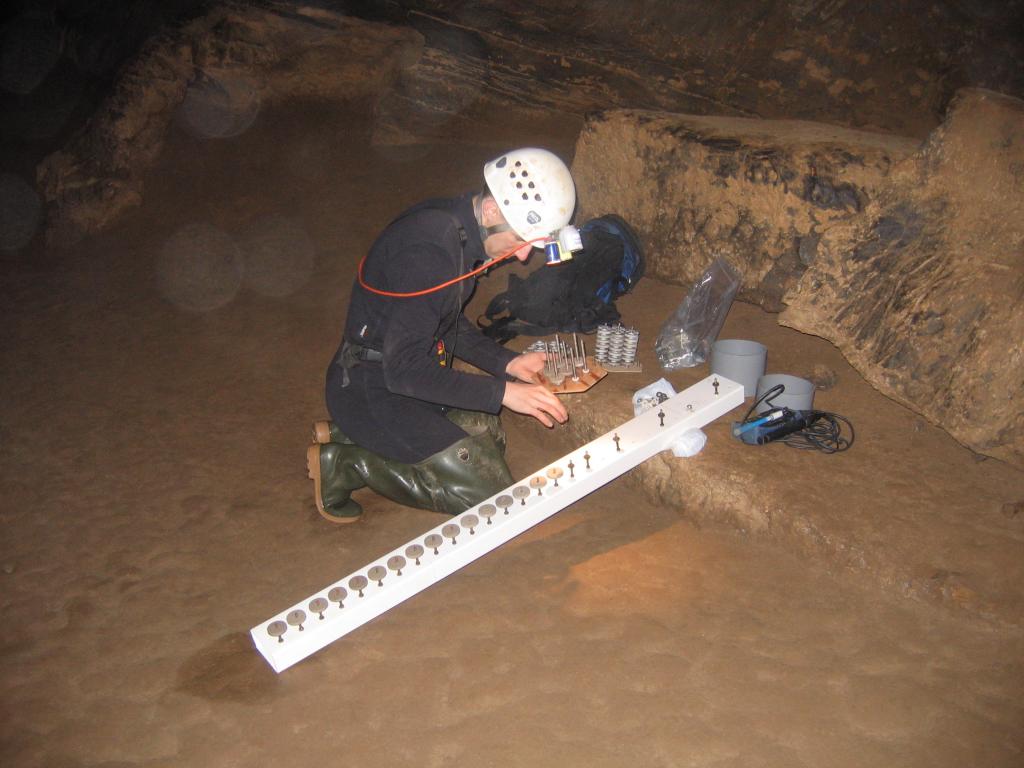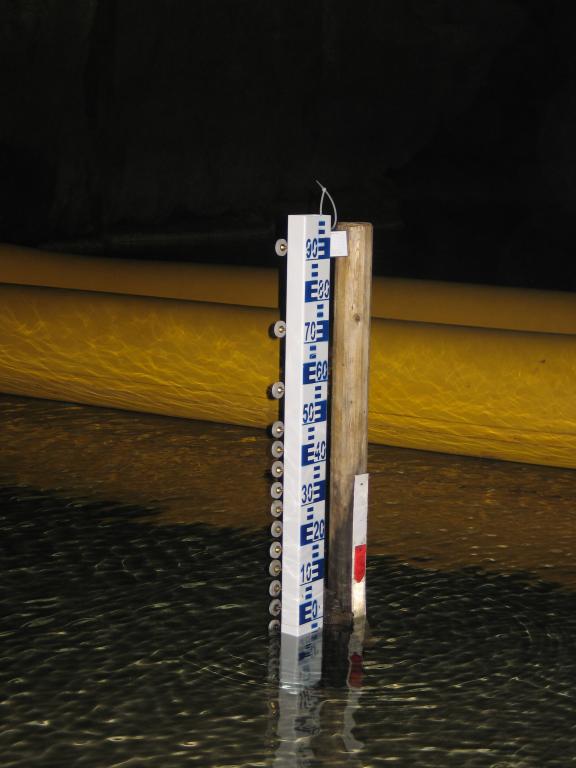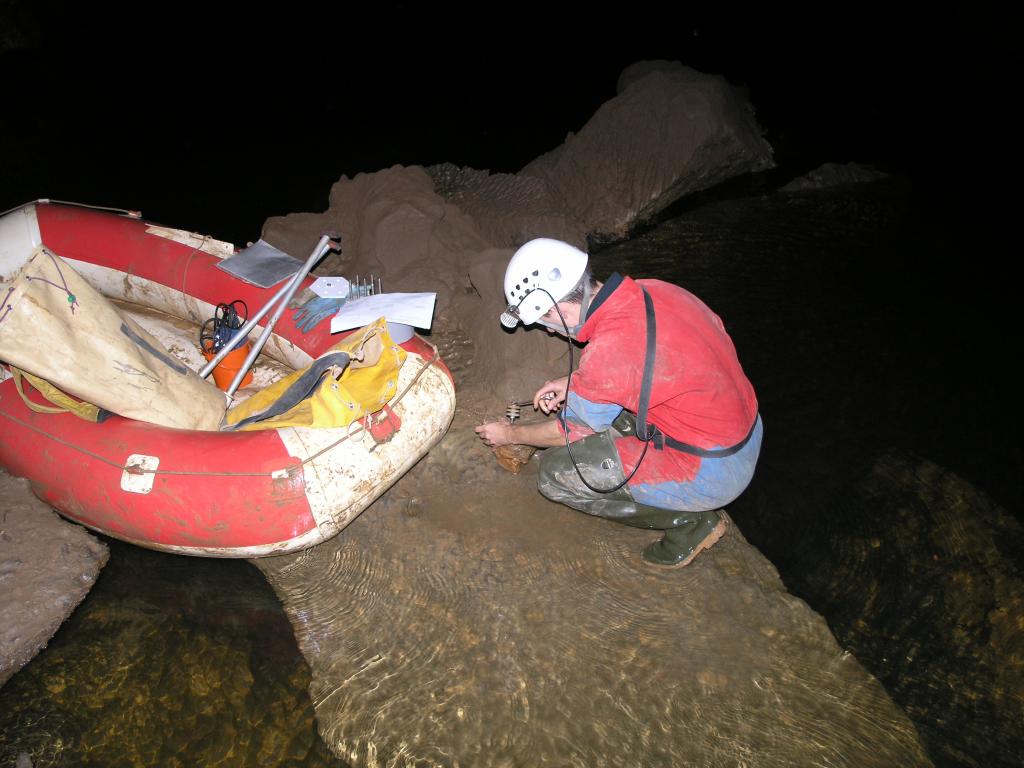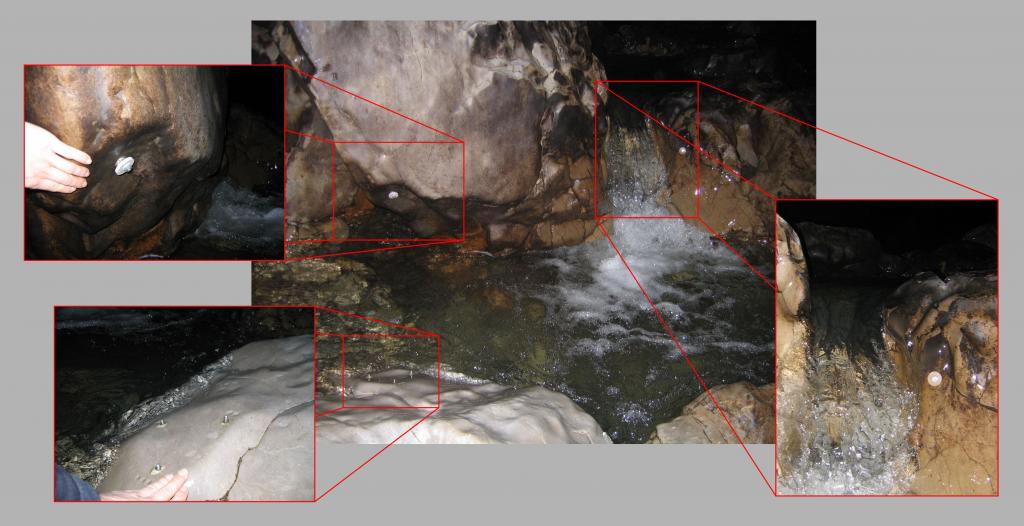Study of recent speleogenesis
Speleogenesis is usually studied from two different time perspectives, this is (i) the long-term development studied by cave sediment dating and (ii) short-term measurements of present-day processes and factors (in situ measurements). Quantitative measurements of the present-day processes provide information of recent speleogenetical dynamics in studied caves; if such measurements are complemented by the study of recent factors, findings can not be solely related to specific cave only but can provide insight into the crucial mechanisms of speleogenesis as well. Such approach contributes to a general understanding of dissolution rates, boundary conditions during speleogenesis, evaluation of flood events for dissolution, (micro)local differences in processes, rates and factors etc. Direct methodological approach comprises of traditional method (microerosion meter-MEM) and recently improved much more precise method (limestone tablets). Due to generally slow rates, several (tens of) years are needed usually to get relevant rates even with limestone tablets. To evaluate role of specific factors, hydrological (e.g., discharge, water hardness, temperature, pH) and climatic measurements (CO2 concentration) or monitoring is needed. Results can be further post-processed using hydrochemical modelling, which provide information on under- and oversaturation of water and, as such, indirect information about dissolution/calcite precipitation rates. Karst Research Programme supports measurements of present-day dissolution and calcite precipitation rates in all important Slovene stream caves as well as at sinks and springs. Measurements of dissolution rates at springs indicated important role of biodissolution. In addition, measurements are also made in some less known caves that are interesting from the viewpoint of present-day speleogenesis. In some caves, different but complementary methodology has been used for over a decade, compared, and evaluated; e.g., in autumn 2019, 3 different groups of methodology were used to study recent speleogenesis of the Škocjan Caves, as follows: • measurement of processes (MEM and limestone tablets); • measurement of factors (hydrochemical modelling, erosion caused by bed load and suspended load); • study of micromorphology (comparison between actual and theoretically modelled cave rocky relief). Results show much more limited extent and rate of dissolution as well as longer period of cave passage growth as expected by generally accepted beliefs within speleological community. According to temporary very limited dissolution and its small rates compared to calcite precipitation rates, many cave rocky features in hydrologically active caves were recognized as a relict and, as such, inherited from previous periods (Pleistocene).
Publications:
- Covington M., Prelovšek M., Gabrovšek F., 2013. Influence of CO2 dynamics on the longitudinal variation of incision rates in soluble bedrock channels: Feedback mechanisms. Geomorphology, 186: 85-95. https://doi.org/10.1016/j.geomorph.2012.12.025
- Mulec J., Prelovšek M., 2015. Freshwater biodissolution rates of limestone in the temperate climate of the Dinaric karst in Slovenia. Geomorphology, 228: 787-795. https://doi.org/10.1016/j.geomorph.2014.10.022
- Prelovšek M., 2020. Measurements of present-day limestone dissolution and calcite precipitation rates with limestone tablets in stream caves (with the case study of Škocjanske jame). In press.
- Prelovšek M., Turk J., Gabrovšek F., 2008. Hydrodynamic aspect of caves. International Journal of Speleology, 37(1): 11-26. http://dx.doi.org/10.5038/1827-806X.37.1.2
- Slabe T., Prelovšek M., 2013. Rock Features and Morphogenesis in Epigenic Caves. In: Shroder F.J. (ed). Treatise on Geomorphology, Volume 1-14.



